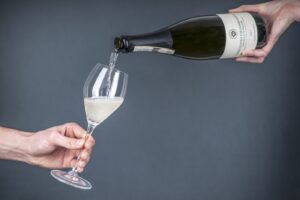Piero Antinori and his three daughters, Albiera, Allegra and Alessia: this is the family, from a long Tuscan enological tradition, that represents the vanguard of “Made in Italy” entrepreneurship. The family that has just recently celebrated the 500th anniversary of its arrival in their Florence villa, and the Barone Ricasoli, have both, in fact, conquered top positions in the classification of the world’s oldest family businesses according to the U.S. magazine “Family Business”, which also takes into account the success of these old family businesses.
Italy has entered into the classification that includes 16 other countries (among which France, Great Britain and Germany, the homelands of solid and ancient family brands), and boasts 15 companies that all ranked fairly high on the list. This classification is confirmation that family run businesses, when they have a well rooted entrepreneurial culture, are capable of resisting throughout time, even if they don’t reach multinational dimensions.
The Antinori Family justly boasts of their enrolment in the Florentine Winemakers Guild since 1385, and of which they have remained leaders in for 26 generations, and becoming today one of the most prestigious and famous winemakers in the world.
The company from Siena that is owned by the Barone Ricasoli, took sixth place thanks to its ancient founding, dating back to 1141. The company, with earnings of 11 million euros with 2 million bottles sold, returned to the hands of the Ricasoli family in 1993, after a short period of outside management. The top of the classification is held by two Japanese companies: Kongo Gumi of Osama, whose family founded their business in 578, and the Hoshi Ryokan Company of Komatsu.
Antinori Celebrates – The Renaissance spirit of the Antinori family is alive again within the walls of their historic villa in Florence, which is now celebrating half a millennium of history. An aesthetic conception that has generated a new “Renaissance” for Italian wine.
500 years of history, and 26 generations of the Antinori family have passed in their villa located on the prestigious Via Tornabuoni in Florence, where they are now honoring their 500th anniversary with a double celebration: a contemporary art exhibition on display in their courtyard (11 May – 13 July) entitled “Per Bacco”, and the publication of the book, “Ancient Future – The History of the Antinori Family and Their Villa”, written by Piero Antinori himself (published by Alinari).
The exhibit is an expression of the Antinori family’s love for both art and the land, which has pervaded throughout the centuries, with the family’s particular capacity to rediscover its glorious roots and to extract from it the vitality to create new beauty – above all in bottles. Labels like Solaia, Cervaro della Sala, Guado al Tasso, are only a few examples that have made history among Italian wine. But Tignanello is probably the wine that best symbolizes this particular capacity of the Antinori, characterized by both a “continuum” (wine as a constant protagonist throughout the centuries in the family affairs) as well as the “novum” (Tignanello is considered the wine, with a few other labels, that ignited the current “Renaissance” of Italian wine, and a true push in the re-launching of “Made in Italy” goods). It is a label that anticipated contemporary wines, as well as re-approaching the most authentic part of the history of its territory of origin, Chianti Classico, giving back a renewed shine to the name Chianti during a period in which (the first bottles of Tignanello are from 1971) Tuscan wine (and Italian wine in general) definitely did not have the prominence it claims today. A wine that was capable of innovation only where it was necessary, thus keeping itself well founded in the grooves of the best Tuscan winemaking traditions.
White grapes banished in favor of an almost pure Sangiovese (apart from small additions of Canaiolo and Malvasia in the first vintages, later substituted with Cabernet Sauvignon), thus bringing back the territory’s prince of grapes to its role as the only variety capable of best interpreting the region. There was also the initiation of the use of malolactic fermentation, a practice that was almost inexistent in Italy, and the substitution of large barrels with barriques.
These are all notable innovative steps, but always well-founded in tradition as the label of Tignanello itself explains, a label that has never varied, that represents essentiality and determination, making itself a model of style and sobriety. The graphic design, create by designer Silvio Coppola, has become the unmistakable signature of the Antinori family and is based on four elements: the name Tignanello, the Antinori coat of arms, the red sphere that evokes the sun that shines on Tuscany, and a descriptive text of the most important elements of this wine: the land, its composition, exposition, altitude of vineyards, and the type of ageing and refinement processes.
The things that truly count in the end.
Copyright © 2000/2026
Contatti: info@winenews.it
Seguici anche su Twitter: @WineNewsIt
Seguici anche su Facebook: @winenewsit
Questo articolo è tratto dall'archivio di WineNews - Tutti i diritti riservati - Copyright © 2000/2026








































































































































































































